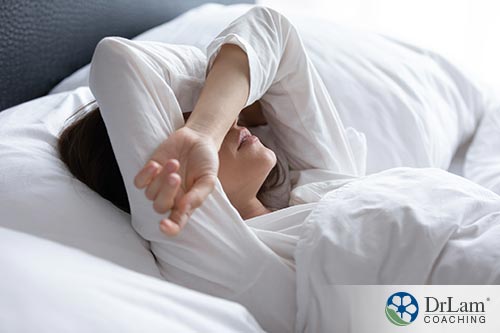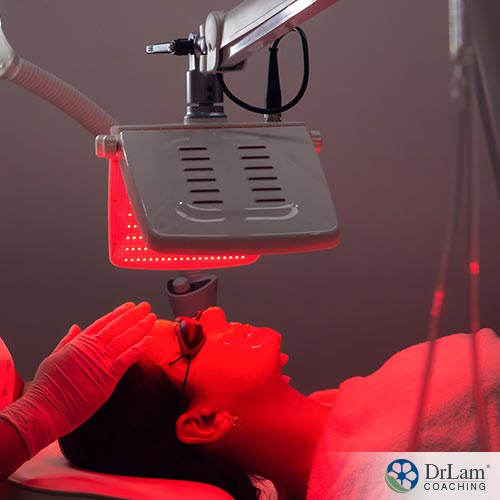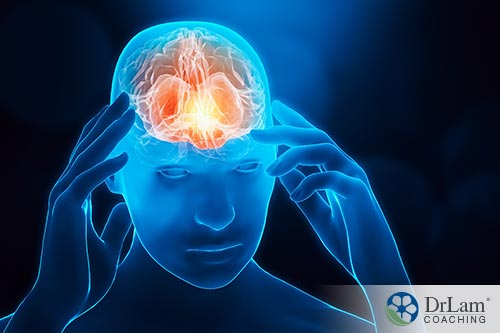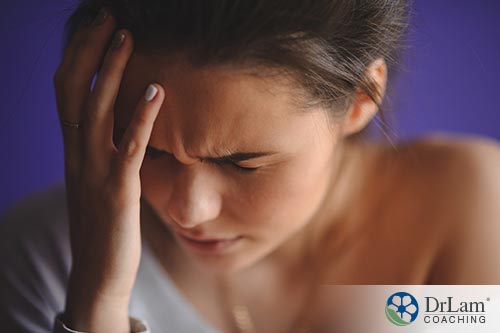 Do you struggle to sleep properly? Do you wake up in the middle of the night and find that you are unable to fall asleep again? If this is you, then you may suffer from sleep maintenance insomnia. This is one of the most common sleeping disorders, and it can seriously impact your quality of life and your physical, mental, and emotional health. Unfortunately, common solutions such as medications can have nasty side effects, particularly if you have chronic conditions or are on other medications. But there are safe, natural, and effective remedies such as sleep maintenance insomnia light therapy that can help without causing additional problems.
Do you struggle to sleep properly? Do you wake up in the middle of the night and find that you are unable to fall asleep again? If this is you, then you may suffer from sleep maintenance insomnia. This is one of the most common sleeping disorders, and it can seriously impact your quality of life and your physical, mental, and emotional health. Unfortunately, common solutions such as medications can have nasty side effects, particularly if you have chronic conditions or are on other medications. But there are safe, natural, and effective remedies such as sleep maintenance insomnia light therapy that can help without causing additional problems.
Sleep maintenance insomnia is one of several troubling sleeping disorders. If you have this problem, then you’ll find yourself waking in the middle of the night and struggling to drop off again. Sleep maintenance insomnia is more common in women and affects around one in five Americans. It’s very prevalent among older people because of age-related changes to the circadian rhythm, behavioral changes, medications, and chronic disorders.
Sleeping problems can sometimes feel like an unavoidable part of your busy modern life. But poor sleep is a clear health threat. It can contribute to issues such as heart attack or heart failure, high blood pressure, obesity, low sex drive, depression, stroke, and diabetes. That’s why it’s vital that you look for effective solutions such as sleep maintenance insomnia light therapy. This type of therapy is often used in tandem with cognitive behavioral therapy.
Your sleeping patterns are determined by your circadian rhythm. The circadian rhythm regulates and controls biological processes that follow a 24-hour rhythm. It’s regulated by several factors including light, the hormone melatonin, and social and physical activity cues. Unfortunately, not everyone’s circadian rhythm is the same. Some people are early risers. They feel tired early in the evening and wake up with the sun. But not everyone’s body is on the same schedule.
Some people experience circadian rhythm disorders such as delayed sleep phase syndrome (DSPS). This may occur naturally or as the result of other issues. If you have DSPS then you probably think of yourself as a night owl. Your natural sleeping pattern is to stay up after midnight and sleep half the morning away. If you’re allowed to follow this rhythm, then your quality of sleep is probably good between these times. But if you have to get up early for work or for school, then you probably aren’t getting enough sleep. You may also feel tired and fatigued constantly.
Sleep maintenance insomnia is another sign that your circadian rhythm may be malfunctioning. And this sleeping problem can be addressed safely and effectively using sleep maintenance insomnia light therapy.
 Sleep maintenance insomnia light therapy is a type of bright light therapy that is used to manage and reset the circadian rhythm. It involves light exposure at specific times of the day to gradually normalize your sleeping patterns. This technique is also called phototherapy and it’s usually performed under expert supervision.
Sleep maintenance insomnia light therapy is a type of bright light therapy that is used to manage and reset the circadian rhythm. It involves light exposure at specific times of the day to gradually normalize your sleeping patterns. This technique is also called phototherapy and it’s usually performed under expert supervision.
Light therapy works because light is the strongest regulator of the circadian rhythm. Information on light levels is relayed from the eyes to the suprachiasmatic nucleus (SCN) along the retinohypothalamic tract. And the timing of the light exposure is absolutely essential for determining the circadian rhythm timing. So, exposure to light at specific times of the day can help reset your circadian rhythm and help you sleep better during the night hours.
Sleep maintenance insomnia light therapy uses artificial sources of light such as a full spectrum lamp at 10,000 lux or portable visor at a lower light intensity. However, exposure to natural light can also cause this circadian rhythm reset. Typically, specialists recommend 30-90 minutes of light exposure if you suffer from sleeping disorders. However, the level of light used, and the duration must be calibrated to your body and its individual differences.
Sleeping disorders and problems are extremely common when you have Adrenal Fatigue Syndrome (AFS). They often occur as the result of high-stress levels, accompanying disorders and health problems, and Neuroaffect Circuit Malfunction.
When you’re stressed, the last thing you feel like doing is going to sleep, even when you’re tired. This is due to high levels of cortisol in your body. Cortisol is often called the stress hormone and it’s an essential part of the NeuroEndoMetabolic (NEM) stress response. Cortisol activates the circuits that make up this NEM stress response, making you feel alert and awake and ready to face any threat. Ordinarily, once the threat has passed, your cortisol levels will return to normal and you’ll be able to sleep again.
This natural process is often interrupted by the modern lifestyle. Stress is often chronic these days, with a combination of stressors causing ongoing pressure and worry. Your body responds to these pressures the same way it would to a predator, by increasing your cortisol levels. But when your stress levels remain elevated over a long period, it will cause fatigue and malfunctions throughout the body’s circuits.
AFS occurs when your adrenal glands, which create cortisol, become fatigued because of the ongoing high demand for this hormone. And when the health of the adrenals begins to degrade it will affect the health of all the circuits in your body. This includes the Neuroaffect Circuit, which influences your sleeping patterns.
 When the Neuroaffect Circuit becomes dysfunctional because of AFS, it’s extremely important that you look for safe, gentle solutions. This can include sleep maintenance insomnia light therapy. Otherwise, you may experience spiraling symptoms, which can be very frightening and have a long-term impact on your overall health and wellbeing.
When the Neuroaffect Circuit becomes dysfunctional because of AFS, it’s extremely important that you look for safe, gentle solutions. This can include sleep maintenance insomnia light therapy. Otherwise, you may experience spiraling symptoms, which can be very frightening and have a long-term impact on your overall health and wellbeing.
The Neuroaffect circuit includes the brain, autonomic nervous system (ANS) and the microbiome. These three systems are tightly interconnected. So, the good functioning of each is dependent on the health of the others. Unfortunately, this balance is often lost when you have AFS.
In AFS, high levels of cortisol excite the ANS, causing alertness and preventing sleep. This type of excitation during stressful times is normal. Typically, you would deal with the source of the stress, your cortisol levels would go back to normal, and the ANS excitation would fade away, allowing you to sleep again. But when you’re chronically stressed, the ANS remains overactive. This often leads to the feeling of being ‘wired or tired’. And if not corrected, the ANS will start to become fatigued and unbalanced, causing even more troubling problems.
As the ANS declines in health and functioning, the brain and the microbiome will decline as well. The brain responds to the ANS excitation by releasing the Neurotransmitters (NTs) norepinephrine and epinephrine. As time goes on, NT levels will then become unbalanced, which can cause symptoms such as anxiety or depression. This combination will increase your alertness further, worsen any sleeping problems you’re experiencing, and worsen ANS excitation. The microbiome too will be affected by the malfunctions in the brain and ANS, causing bacterial imbalances. And because of the strong link between the brain and the microbiome, this will cause your brain health to decline further.
When you have AFS, it’s important that you look for safe and gentle remedies to any health problems you experience. AFS is caused by high-stress levels, and the last thing you want to do is add to your stress levels and further tax your overly sensitive body. Sleep maintenance insomnia light therapy is safe and gentle. Side effects of this therapy are rare but can occur. That's why it’s important that you get a medical professional’s assistance and advice before trying this therapy. If you experience these side effects, you need to stop immediately and seek out medical help:
 Nausea
NauseaHowever, as long as it’s used carefully and with medical supervision, you can use sleep maintenance insomnia light therapy safely. It’s also an effective way to stabilize your circadian rhythm, lower your stress levels, and sleep properly again.
Sleep maintenance insomnia can impact every aspect of your life and your wellbeing. Traditional solutions don’t always help, but sleep maintenance insomnia light therapy is different. It’s effective and it doesn’t have harsh side effects that could further threaten your health. If you struggle with this type of problem, here’s what to try:
If you have sleep maintenance insomnia and are worried about how it will impact your health, then contact the team at +1-626-571-1234 or click here to use the Ask The Doctor System.
© Copyright 2021 Michael Lam, M.D. All Rights Reserved.
Traditional remedies for sleeping problems can bring their own set of problem. But if you’re looking for a safe, effective, and natural solution, then try sleep maintenance insomnia light therapy. It can help re-establish more natural sleeping problems without side effects.
